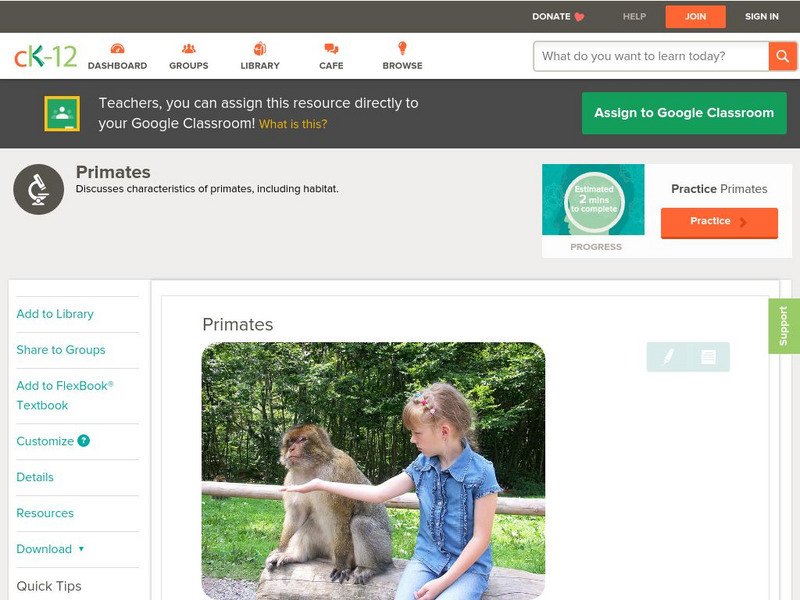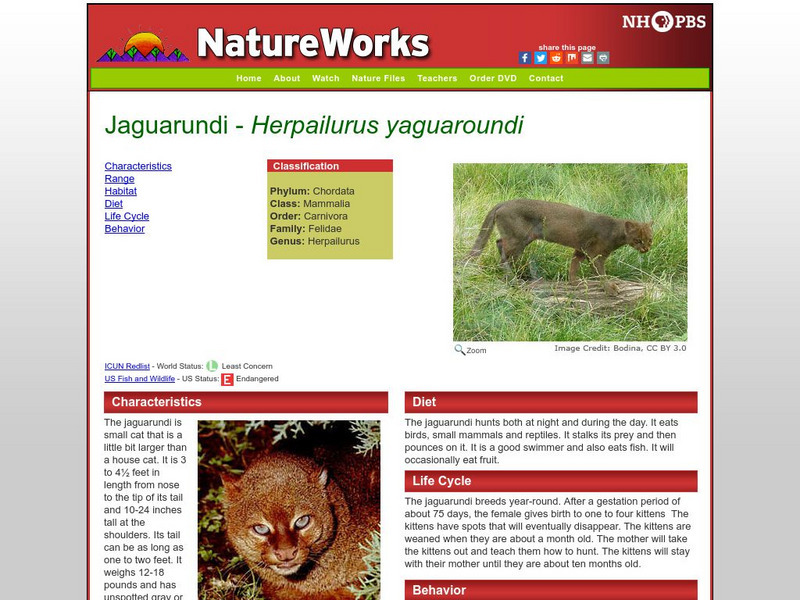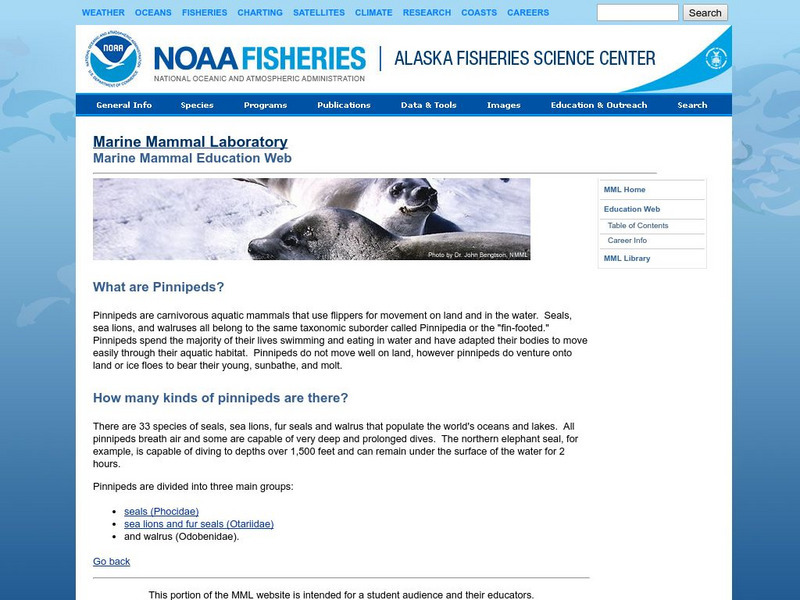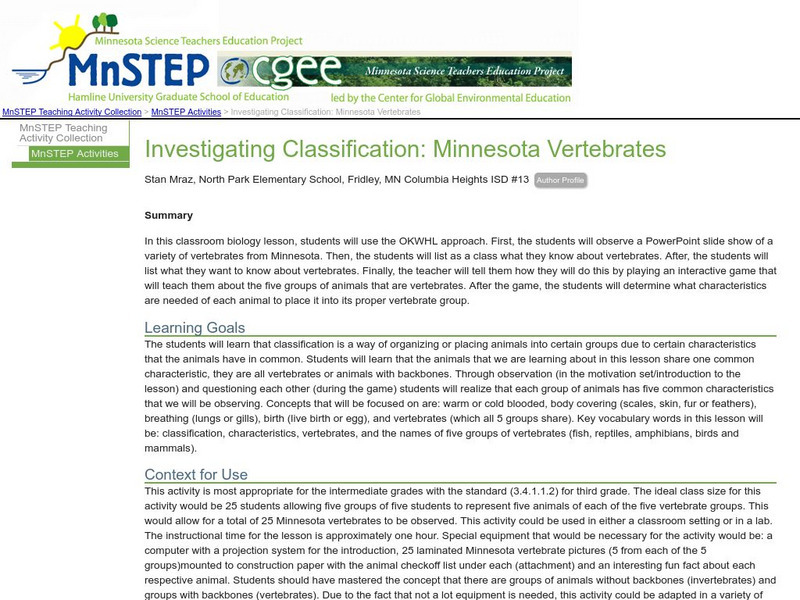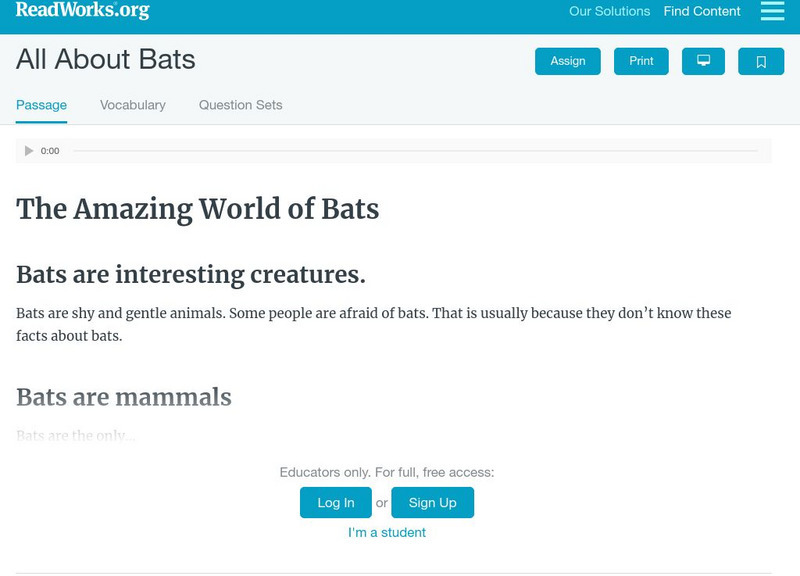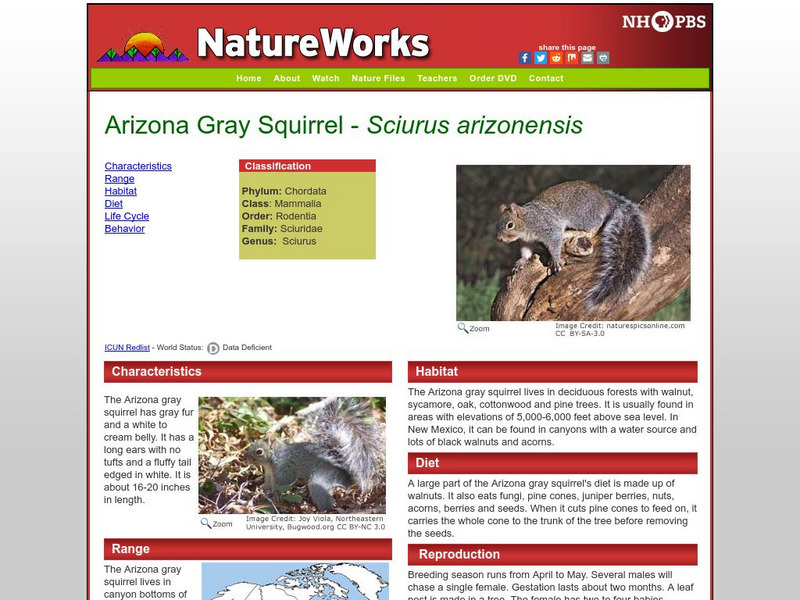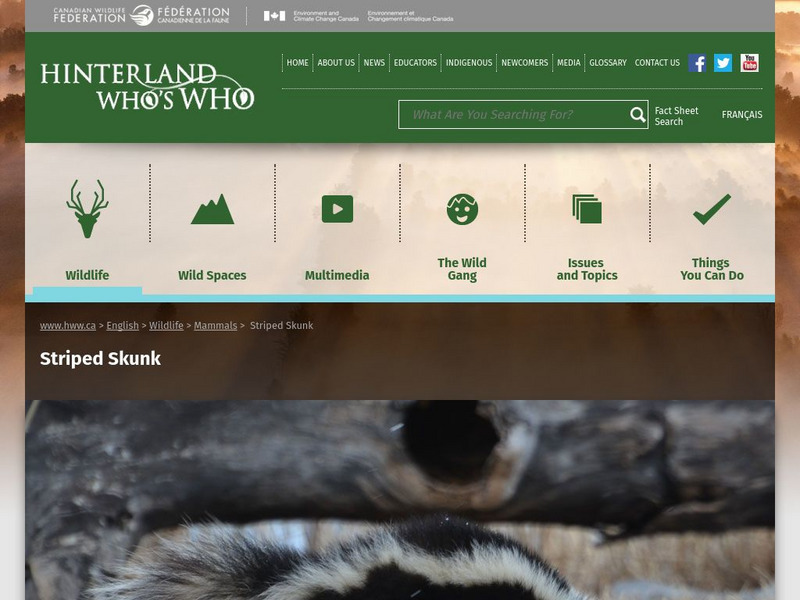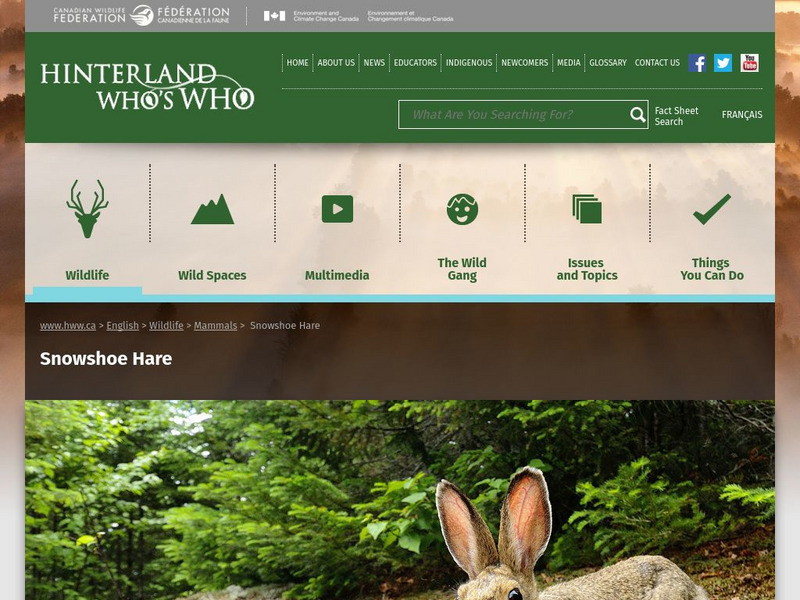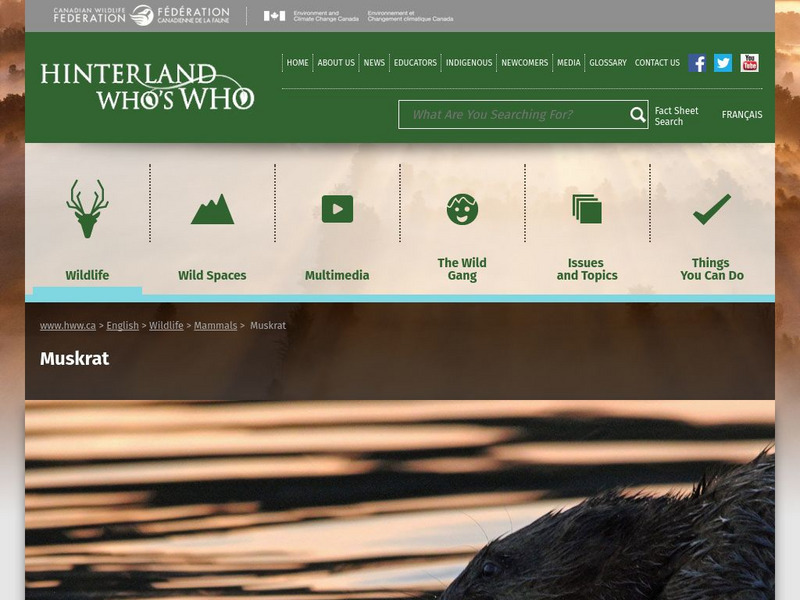American Museum of Natural History
American Museum of Natural History: Kryptobaatar O Logy Card
Flip this interactive OLogy card to find questions and answers, fast facts, and other bite-size pieces of information to help you understand important characteristics of the Kryptobaatar, a prehistoric mammal.
CK-12 Foundation
Ck 12: Life Science: Primates
[Free Registration/Login may be required to access all resource tools.] If primates are mammals, what makes them seem so different from most mammals? Primates, including humans, have several unique features. Some adaptations give...
Canadian Museum of Nature
Canadian Museum of Nature: Saiga
The Canadian Museum of Nature describes the Saiga-an adaptable and speedy Prehistoric Mammal.
PBS
Nh Pbs: Nature Works: Black Footed Ferret
Find out more about the Black Footed Ferret through this educational resource. Students will have an opportunity to learn more about this mammal's habitat, characteristics, range and more.
PBS
Nh Pbs: Nature Works: Jaguarundi
Learn more about the Jaguarundi through the exploration of this resource. The content of this site includes information on behavior, characteristics, life cycle, diet, range and habitat.
US Navy
Office of Naval Reasearch: California Sea Lion
This very thorough site examines the characteristics, adaptations, status and threats, and current research associated with the California Sea Lion. Enjoy the pictures as read about this interesting mammal.
CK-12 Foundation
Ck 12: Life Science: Chordates
[Free Registration/Login may be required to access all resource tools.] Did you know that fish, amphibians, reptiles, birds, and mammals are all related? They are all chordates. Chordates are a group of animals that includes vertebrates,...
NOAA
Noaa: Pinnipeds
What are pinnipeds? Learn about seals, sea lions, and walruses; their characteristics, where they live and their differences.
Sea World Parks & Entertainment
Sea World: Polar Bears
Outlines the characteristics of the polar bear, including classification, habitat, behaviors, and conservation. Helps students identify with polar bears with a list of "Books for Young Readers." Information at a level of upper...
Chicago Zoological Society
Chicago Zoological Society: Zoo Explorer: Lowland Tapir
Learn all about the lowland tapir by browsing this reference from the Brookfield Zoo. In addition to quick facts and a photo, this animal guide provides information on its appearance, habitat, conservation efforts, and other unique...
PBS
Nh Pbs: Nature Works: Swamps
What characteristics make a swamp a swamp? This site features information on the Great Dismal Swamp, Conifer Swamps, Okefenokee Swamps, Shrub Swamps, Hardwood Swamps, and Cypress Swamps. This site also offers some great photographs of...
PBS
Nh Pbs: Nature Works: Moose
The moose is the largest member of the deer family and the largest mammal in North America. Students will find information on its range, habitat, life cycle, behavior, and diet.
Science Education Resource Center at Carleton College
Serc: Investigating Classification: Minnesota Vertebrates
This lesson serves as an introduction to classification. The students will place animals into its proper vertebrate group according to certain characteristics that the animals have in common.
Read Works
Read Works: All About Bats
[Free Registration/Login Required] This nonfiction passages describes the characteristics of bats. This passage is a stand-alone curricular piece that reinforces essential reading skills and strategies and establishes scaffolding for...
Georgia Aquarium
Georgia Aquarium: California Sea Lion
Use this comprehensive animal guide to learn the scientific name and discover the habitat, diet, reproduction, physical, and unique characteristics of the California Sea Lion. Watch them live on the webcam.
Georgia Aquarium
Georgia Aquarium: Asian Small Clawed Otter
Use this animal guide to learn the scientific name and discover the habitat, diet, reproduction, conservation status, physical, and other unique characteristics of the Asian Small-clawed Otter.
PBS
Nh Pbs: Nature Works: Eastern Chipmunk
Did you know the Eastern Chipmunk has white fur on its stomach and reddish-brown fur on its back? Come and explore this educational resource to learn more about this creature's diet, habitat, life cycle and more.
BBC
Bbc Science & Nature: Sea Otter
These pictures of the Sea otter are comically adorable. Use this site to read a detailed fact sheet on the sea otter and to check out the photos.
PBS
Nh Pbs: Nature Works: Arizona Gray Squirrel
Explore the world of the Arizona Gray Squirrel when you visit this resource. This site features information from diet and habitat to reproduction and behavior. Come and check it out.
PBS
Nh Pbs: Nature Works: Bighorn Sheep
Learn more about the bighorn sheep through this informative resource. Students will gain a deeper understanding of the bighorn sheep's habitat, reproduction, behavior and more.
Canadian Wildlife Federation
Hinterland Who's Who: Striped Skunk
Get the facts about the striped skunk. Besides finding a detailed description of this "stinky" creature, you'll also learn about some of its unique facts and characteristics. Also included in this Mammal Fact Sheet on the striped skunk...
Canadian Wildlife Federation
Hinterland Who's Who: Snowshoe Hare
Get the facts about the snowshoe hare. Besides finding a detailed description of this common forest creature that only lives in North America, you'll also learn about some of its unique facts and characteristics. Also included in this...
Canadian Wildlife Federation
Hinterland Who's Who: Muskrat
Get the facts about the muskrat. Besides finding a detailed description of this water-loving rodent, you'll also learn about some of its unique facts and characteristics. Also included in this Mammal Fact Sheet on the muskrat is...



